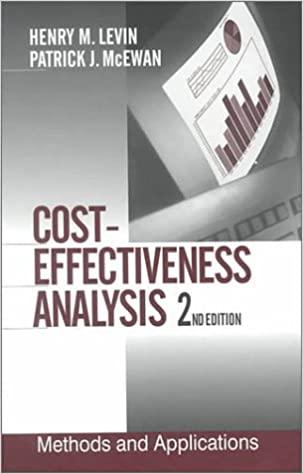Question
Mark and Alicia Story, recently married, have decided that they want to buy a $550,000 house. They are planning to give 20% down payment and
Mark and Alicia Story, recently married, have decided that they want to buy a $550,000 house. They are planning to give 20% down payment and finance the rest with a mortgage. Mark and Alicia are now ready to meet with Chris Vaughan, the loan officer for First United National Bank. The meeting is to discuss the mortgage options available to the company to finance the property. Chris begins the meeting by discussing a 30year mortgage. The loan would be repaid in equal monthly installments. Because of the previous relationship between Mark and the bank, there would be no closing costs for the loan. Chris states that the APR of this loan would be 3.75 percent. Alicia asks if a shorter mortgage loan is available. Chris says that the bank does have 25year, 20year and 15year mortgages available 3.675, 3.375 and 3.25 percent respectively.
Mark decides to ask Chris about a smart loan he heard about from a friend. A smart loan works as follows : Every two weeks a mortgage payment is made that is exactly onehalf of the traditional monthly mortgage payment. Chris informs him that the bank does have smart loans. The APR of smart loan would be the same as the APR of the traditional loans. Mark nods his head. He then asks whether this is the best mortgage option available to him in order to save interest payments.
Chris suggests that a bullet loan, or balloon payment, would result in the greatest interest savings. At Alicias prompting, she goes on to explain a bullet loan. The monthly payments of a bullet loan would be calculated using a 10year traditional mortgage at a rate of 3.40 percent. In this case, there would be a 5year bullet. This would mean that the Storys would make the mortgage payments for the traditional mortgage for the first five years, but immediately after they make the 60th payment, the bullet payment would be due. The bullet payment is the remaining principal of the loan. Chris then asks how the bullet payment is calculated. Chris tells him that the remaining principal can be calculated using an amortization table, but it is also the present value of the remaining 5 years of mortgage payments.
Alicia has also heard of an interestonly loan and asks if this loan is available and what the terms would be. Chris says that the bank offers an interestonly loan with a term of 10 years and an APR of 3.5 percent. She goes on to further explain the terms. Mark would be responsible for making interest payments each month on the amount borrowed. No principal payments are required. At the end of the 10year term, the Storys would repay the amount they borrowed. However, the Storys can make principal payments at any time. The principal payments would work just like those on a traditional mortgage. Principal payments would reduce the principal of the loan and reduce the interest due on the next payment. Mark and Alicia are satisfied with Chris answers, but they are still unsure of which loan they should choose. They have asked Chris to answer the following questions to help them choose the correct mortgage.
Assume the Storys get paid biweekly and are really interested in the smart loans. How long would it take to pay off the 4 traditional mortgages if they choose the smart payments plan ? How much money do they save by doing smart loans compared to traditional mortgages ?
Step by Step Solution
There are 3 Steps involved in it
Step: 1

Get Instant Access to Expert-Tailored Solutions
See step-by-step solutions with expert insights and AI powered tools for academic success
Step: 2

Step: 3

Ace Your Homework with AI
Get the answers you need in no time with our AI-driven, step-by-step assistance
Get Started


